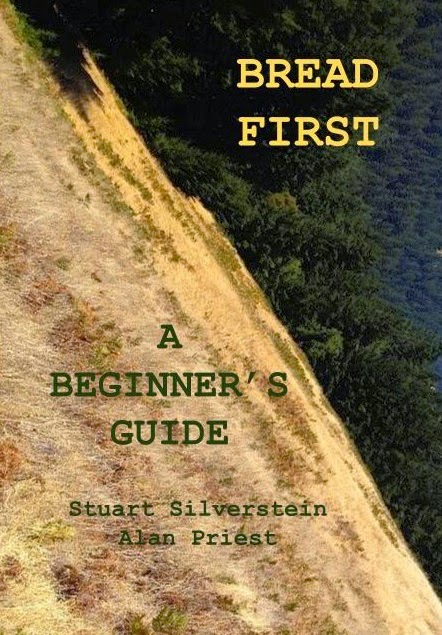The Earth Oven
Abbott, aged 72 is an artist, 16 mm filmmaker and art professor. Nancy, aged 70 is a potter and French teacher. Working with them was a rewarding experience for me. They really are living proof that numbers don’t add up to anything. Senior citizens? What’s that? None around here. And there were no testosterone-charged young men to move 80 pound bags of concrete mix (although that would have helped), nor did anyone help them get the rocks up the hill to the building site. They did it all themselves with just a little help from me, and they celebrated their 50th wedding anniversary in 2008. Every step in the process, every peek around the corner was an adventure for them because they had never done this before. “Please don’t do anything until I get back,” was a common refrain if someone had to run an errand. When the job was finished and the first rustic pizza was taken from the blazing oven, we all had to laugh considering what everyone went through to get to that final stage, but of course it was all worth it. After the initial decision had been made to construct an earth oven, they had to decide where it should go. The size of the footprint is not really that much different between a small and large oven so the choice of location will remain the same. We’ll only be talking about outdoor locations because constructing an oven indoors poses some challenges that are beyond the scope of this book. Abbott and Nancy wanted an oven that would be close to their home, visible from the deck, but not pose a fire hazard. Although the oven would be raised off the ground, we still wanted to find a well-drained location because here in New England, frost in the ground could cause the oven to heave up in the spring and create some real problems, such as cracking and shifting the oven off level. Even after finding what we felt would be the best location, we would still dig down below grade for as least one foot and fill the space with gravel.
The theory was that if any water did get in under the oven, the gravel would allow it to drain, and there would be no or very little freezing under the oven. If you were totally fanatical about preventing frost problems, then you would have to dig a hole about two feet deep, fill it with gravel and then lay in rigid foam insulation that extended six inches beyond the perimeter of the oven base. A slab would then be poured right on the foam. Or you could excavate a hole below the frost line that could be four feet deep and fill that with gravel. There was no way we would follow these alternative paths. We were willing to take our chances with the least demanding approach, and you should be able to as well. We simply dug a hole, filled it with gravel and then poured our slab.







1 comment:
Post a Comment